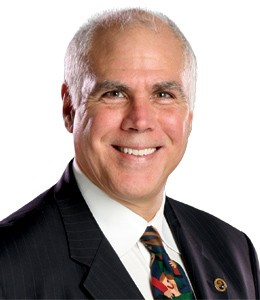Technology Alone Won’t Transform Education – We Need A Whole New Approach To Teaching And Learning

“The meter for innovation in education appears to be stuck on low”, argues Dr Sonny Magana

Teachers are like pipers at the gates of dawn. Educators and educational leaders bear enormous responsibilities for orchestrating and shaping the future. We do so by empowering our current students to interact and develop deeper connections with knowledge, each other, and themselves, in a modern world context.
Arguably, the modern world is experiencing a profoundly disruptive period. Across the globe, digital technologies have enabled radical transformations in nearly every imaginable endeavour from archaeology to zoology. It stands to reason that educators must effectively manage modern teaching and learning tools and processes in order to better prepare students for social and professional success many years down the track.
Towards that happy occurrence, national educational systems have optimistically invested billions in tax revenues to digitise traditional classrooms. School infrastructures have been updated, new and emerging tools are regularly purchased, and teachers are trained on how to use these new tools.
Meagre impact
Sadly, the evidence on the impact of these investments does not match the optimism. Despite decades of evidence-free propaganda bombarding teachers and decision makers about the inherently transformational nature of digital tools in schools, the reality simply does not match the hype. In fact, the average impact computer technology has had in education has been downright dismal.
A meaningful way to look at the evidence of technology’s impact in education is to use John Hattie’s effect size measurement. In 2017, after reviewing over 160 meta-analyses from over 10,000 studies on the impact of computers in education, Hattie observed that the average effect of digital tools in schools is an anemic 0.34 – well below the zone of desirable effects (0.4 and above).
Worse still, this meagre impact has not changed in over 50 years – despite vast leaps in digital technologies since the swinging 60s. The meter for innovation in education appears to be stuck on low.
Perhaps the main reason for this disappointing impact is that the inclusion of technologies in schools has done little to change the ‘tell and practise’ approach to teaching and learning – the predominant pedagogical practice of our time.
In this model, teachers tell students what knowledge is and what is worth knowing; meanwhile, students invest their limitless capacity for investigating, thinking critically, creating, hypothesising, and collaborating by memorising and practising what they’re told.
One implication of this problem is that if the tell and practise model remains steadfast, then we can expect the impact of new and emerging technologies – like VR (Virtual Reality), AI (Artificial Intelligence), and the Internet of Things – to be about 0.34 for the next 50 years or more. And that my friends, is double trouble.
Looking through a new lens
Fortunately, there is cause for renewed optimism – once again based on evidence provided by rigorous research. After more than 30 years of investigating the wicked problem of advancing technology and innovation in education, I’ve observed that when technology tools are used to enhance innovative practices that are grounded in sound research and theory, one can expect large to very large gains in student achievement and learning productivity.
I’ve synthesised my life’s work into a new book, Disruptive Classroom Technologies: A Framework for Innovation in Education. My overarching goal is to disrupt the predominant use of educational technology tools by using the T3 Framework for Innovation in Education as a lens through which to view schools and schooling. The T3 Framework is an evidence-based model which increments technology usage in schools into three distinct domains: T1: Translational, T2: Transformational, and T3: Transcendent.
The impact of the T1: Translational stage of technology use – that is, simply automating teaching and learning tasks, or consuming content knowledge and information through digital tools – has been historically low.
Rather than placing a greater burden on teachers, advancing from the T1: Translational phase of technology use to the T2: Transformational stage engenders shifting the loci of learning experiences from teachers to students.
While there is no common definition for this shift, I suggest the following: “Transformational technology use in education reflects the intentional application of digital technologies to unleash students’ learning expertise, in ways not possible without technology, to achieve ever higher levels of knowledge and mastery.”
The two elements of this stage are: T2.1: Production, and T2.2: Contribution. In the former, students leverage technologies to produce digital representations of what they know (declarative knowledge) and what they can do (procedural knowledge), as well as to capture and make their thinking pathways explicit.
In the latter stage, students use digital tools to design, create, share, and scale digital knowledge products with the purpose of teaching others what they know.
Solve wicked problems
In this digital era, it is no longer appropriate to ask students what they want to be when they grow up. There is a far more important two-part question to put to them: “What wicked problem matters to you… and what are you going to do about it?”
Thus, the final stage of technology use, T3: Transcendent, begins with student passion and concludes with students engaging in designing original lines of inquiry and applying social entrepreneurship strategies to solve wicked problems that matter to them. Doing this at least once a week – say, on Wicked Problem Fridays – will give your students ample opportunities to explore, interpret, discuss, and critically analyse knowledge and information that is important to them.
Moreover, doing so will empower your students to become leaders for action who make a significant contribution to their local and extended communities.
The strategies associated with the T2: Transformational and the T3: Transcendent uses of digital tools, as I’ve defined and identified in Disruptive Classroom Technologies, have an impact on student learning that is equivalent to three or more additional years of student achievement in a single academic year, perhaps even more.
No one can predict the future. However, I will make a bold forecast: that together, we can build collective efficacy in our learning systems by using the guidance provided by the T3 Framework to not only disrupt the historic pattern of low technology use in education, but to unleash students’ limitless learning potential. That is arguably a set of ideas worth pursuing and sharing by today’s pipers at the gates of dawn.
Dr Anthony J “Sonny” Magana III is an award-winning educational futurist, best-selling author, and pioneering educational technology researcher.












